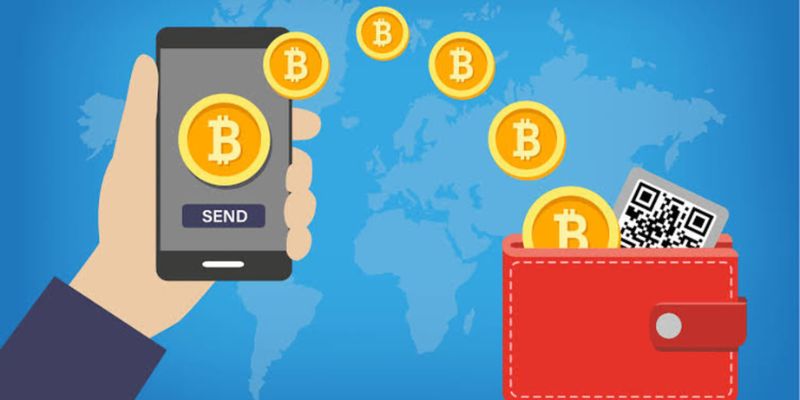Diving into the world of cryptocurrency can be overwhelming, but the right start makes all the difference. Your journey begins with choosing the Best Bitcoin wallets for beginners (with setup guide) that’s secure and easy to navigate. Let’s cut through the complexity and set you up for success with wallets that offer peace of mind and simplicity. Whether you’re looking to trade, invest, or simply store your Bitcoin, having a trustworthy wallet is key—it’s literally the bank in your back pocket. Get ready to turn the confusing into clear-cut with this step-by-step setup success guide.
Understanding the Basics of Bitcoin Wallets for Beginners
Types of Bitcoin Wallets: Hot vs. Cold Storage
So, you’re new to Bitcoin and you need a wallet. What now? First, you need to know about two wallet types: hot and cold. Hot wallets connect to the internet. They let you access your Bitcoin fast. Cold wallets do not connect to the internet. This makes them safer from online attacks but less handy for quick trades or spending.
Think of hot wallets like your regular wallet. It’s easy to reach, but you wouldn’t carry all your money in it, right? Cold storage is like a safe. You keep most of your money there because it’s secure. Each wallet has its job. For daily use, hot wallets work great. But for saving more Bitcoin, cold wallets are the way to go.
The Importance of Wallet Security and Encryption
Security is a big deal when you’re starting with Bitcoin. You want a place for your coins where hackers can’t get them. That place is an encrypted wallet. Encryption is like a secret code. It locks your wallet so only you can open it. The key to this lock is a password or PIN that only you know.
You also get something called a seed phrase. A seed phrase is a list of random words your wallet gives you. Write it down and keep it safe. If you lose your wallet, this phrase gets your Bitcoin back. It’s that important.
Remember, simple doesn’t mean weak. User-friendly crypto wallets can be safe and easy! When choosing, start with the basics. How does it secure your coins? Does it encrypt? Can you handle it with no fuss?
In short, for new folks: mobile apps and desktop wallets are good for everyday use. Hardware wallets are top for long-term saving. All beginners need a wallet that does its job: it keeps your Bitcoin safe and ready for what comes next.
Now you know the ground rules for Bitcoin wallets. Secure and simple. Encryption is your friend. And always remember your seed phrase. Keep it up, and you’ll manage your digital treasure like a true pro!
Selecting the Right Bitcoin Wallet
Assessing Your Security Needs and Wallet Features
Have you asked yourself how safe you want your bitcoins to be? Getting this answered helps you pick right. Simple, right? There’s more to it. You want a wallet easy to use yet tough for thieves. Think about what each wallet offers you. Check both hot and cold wallets. Hot wallets connect to the internet and are super easy to use. Cold wallets stay offline. They’re like a safe for your digital cash. More on this neat stuff in a jiffy!
Let’s dive into how these wallets work. Look at cold storage options for beginners if you want top-notch security. Why? They never touch the internet. Hackers can’t reach them! But don’t forget that they are less handy for fast trades or shopping.
Hot wallets, though, are just the ticket if you need quick access. These are in your phone or computer. Ready to use whenever. But, watch out! They are more at risk from online crooks. So, back up your wallet. That means making copies. If anything goes wrong, your hard-earned coins are still safe.
Now, bitcoin wallet encryption for beginners is a huge deal. This makes it super tough for anyone but you to open your wallet. And the secret word mix called the seed phrase? Guard it like treasure. It unlocks your coins if your wallet gets lost or breaks.
Got it? Great! Let’s check out what’s best for you.
Top Beginner-Friendly Bitcoin Wallet Options
Here’s where it gets exciting. A variety of wallets are out there. Each has its own cool bits. Mobile apps are easy-peasy to get. Take them anywhere, use them any time. Perfect for buying a coffee with bitcoin! Have a peak here at mobile bitcoin wallet apps for starters.
Fancy using a computer more? Look up desktop bitcoin wallets beginner tutorial. Why? They often give you more control and power over the wallet. Yet, they’re still simple enough for newbies.
And the Rolls-Royce of wallets? Hardware wallet setup for beginners. These gadgets store your bitcoin off the grid. Just plug in, transfer, unplug, and relax. Your bitcoins are safely offline. This might sound a bit high-tech, but hardware wallets are surprisingly straightforward.
So, try thinking about how you will use your wallet. Decide on mobile, desktop, or hardware based on this. Look for a balance between comfort and safety. Cost matters too. Awesome wallets don’t have to cost a ton.
Check beginner bitcoin wallet recommendations online. Find ones that fit your needs. Make sure to select trusted crypto wallets for new investors. Once you have made your choice, follow our easy bitcoin wallet setup instructions. We keep it simple. You’ll get your wallet running in no time.
With your new wallet, always stay alert. Keep learning about how to keep your bitcoins secure. It’s vital. Remember, checking and picking the right wallet is your first big step in owning bitcoins. It’s your money – make it count!
Step-by-Step Bitcoin Wallet Setup and Management
Installing and Creating Your First Bitcoin Wallet
Setting up your first bitcoin wallet is like stepping into a new world. It’s exciting, but you want to do it right. Here’s a simple crypto wallet tutorial for novices. First, choose a wallet. There are many out there, so pick one that’s user-friendly. Doing this makes the rest easy. Next, install it. If it’s a mobile app, get it from your app store. For a desktop wallet, download it from the website and install it.
Now, open your wallet. You’ll create a new wallet. Write down your recovery phrase. This phrase is a key to your coins. Keep it safe and secret. Next, set a strong password. It helps keep your money safe. You’ve done it! You’ve set up your wallet.
Fundamental Security Practices: Backup and Seed Phrases
Backing up your wallet should be your top priority. A backup is your safety net. If your device breaks or gets lost, you’re okay if you have a backup. So, how do you back up your wallet? It’s simple. Use your recovery phrase. This is a string of words given when you make your wallet. Write it down and store it somewhere safe.
What’s a seed phrase, you might ask? It’s the same as your recovery phrase. It gives you access to your coins on any device. Remember, anyone with this phrase can access your wallet. So, it’s best to keep it as safe as jewels.
In short, setting up a bitcoin wallet is simple. Choose a reliable one, jot down your seed phrase, and set a strong password. Always back up your wallet and protect your seed phrase. With these steps, you’ll be a savvy bitcoin owner in no time.
Navigating Your Bitcoin Wallet Like a Pro
Sending and Receiving Bitcoin Transactions
When you start using a bitcoin wallet, you’ll need to know how to send and receive bitcoin. It might seem tricky at first, but I’m here to guide you through it! To send bitcoin, you simply enter the recipient’s address, the amount, and hit “Send”. As for receiving, you’ll share your address and wait for the sender to complete the transaction.
Now, let’s dig in. Your wallet will have a “Send” button. Click it, and a form will pop up. Here, you’ll paste in the address of the person you’re paying. Be careful – a single mistake could send your bitcoin to the wrong person, and that’s often irreversible.
Next, input how much bitcoin you wish to send. You can usually choose the speed of the transaction. Faster speeds mean higher fees. Once you’re set, double-check the details and confirm the transaction.
Receiving bitcoin is easier. Hit the “Receive” button in your wallet. It shows your unique bitcoin address. Share this with the person who will pay you. This can be as a QR code or a string of numbers and letters. When they send it, you’ll see the bitcoin in your account once the network confirms the transaction.
Ongoing Management and Best Practices for New Users
Managing your wallet is vital for safety and ease. Use strong, unique passwords and change them often. Keep your wallet software updated. This keeps it secure against hackers.
Backups are a must. Back up your wallet in different places, like USB drives or even paper. This way, if your computer fails, you won’t lose your bitcoin.
Understand seed phrases, which are a series of words that can restore your wallet. Write them down. Store them in a safe place, not on your computer. If you lose them, you could lose access to your bitcoin forever.
For spending, start with small amounts. This lets you practice without risking too much. Watch your transactions to learn how long they take and the fees.
As a novice, you might wonder about keeping your bitcoin safe. Use wallets that are well-known for being secure and newbie-friendly. Hardware wallets are top for security. They store your bitcoin offline.
For day-to-day use, mobile wallets are simple. They’re like apps on your phone. Just remember, if your phone gets lost or stolen, you could lose access if you’re not backed up.
Desktop wallets are also an option. They’re software you download to your computer. They can be very user-friendly and secure if your computer is safe from viruses and malware.
Remember, taking care of your wallet is like caring for your regular wallet. Keep it safe, know how to use it, and stay informed. With these basics, you’ll be a pro at managing your digital cash in no time!
In this guide, we walked through the essential steps to understand, select, and manage a Bitcoin wallet. We started with the basics, explaining the different types such as hot and cold storage, and stressed the need for strong security. Then, we looked at how to pick the right wallet, focusing on your need for safety and handy features. I highlighted some top choices for starters to make it easier to dive in.
Setting up your first Bitcoin wallet came next. I guided you through installation and the crucial steps for keeping your investment safe, like using backup and seed phrases. Lastly, we tackled how to use your wallet with skill, sending and receiving Bitcoin and following best practices to keep on top of your game.
Remember, diving into Bitcoin can be as exciting as it is daunting, but with the right knowledge, you’re set to handle your digital currency with confidence. Stick with these guidelines, keep your wallet secure, and you’re well on your way to becoming a savvy Bitcoin user. Stay curious and always prioritize security—for peace of mind and a better Bitcoin experience!
Q&A :
What are the top-rated Bitcoin wallets suitable for beginners?
When selecting a Bitcoin wallet as a beginner, user-friendliness and security are key considerations. The top-rated wallets often include options such as Coinbase Wallet, Electrum, and Exodus. These wallets provide a balance between easy navigation for new users and robust security features. They also usually offer setup guides and ongoing customer support, which can be extremely helpful for beginners.
How do I set up a beginner-friendly Bitcoin wallet?
Setting up a Bitcoin wallet for beginners usually follows a simple process:
- Choose a beginner-friendly Bitcoin wallet like Coinbase Wallet or Exodus.
- Download and install the wallet application on your device.
- Create a new wallet within the application.
- Make note of and securely store your recovery phrase (this is vital for wallet recovery if required).
- Follow the in-app tutorial to receive and send Bitcoin to familiarize yourself with the wallet operations.
The specific steps may vary slightly depending on the wallet you choose, so always refer to the setup guide provided by the wallet service.
What are the essential features to look for in a beginner’s Bitcoin wallet?
When searching for a Bitcoin wallet as a beginner, essential features to consider are:
- User-friendly interface: It should be intuitive and easy to navigate.
- Security: Look for features like two-factor authentication (2FA), strong encryption, and back-up options.
- Educational resources: A good beginner’s wallet will have resources to help newcomers understand cryptocurrency transactions.
- Customer support: Responsive support is invaluable for beginners who may have questions or need assistance.
- Compatibility: Check that the wallet supports your device, whether it’s a mobile wallet or a desktop application.
Remember, the best wallet for you will depend on your specific needs and how you plan to use Bitcoin.
Is it safe for beginners to use online (web-based) Bitcoin wallets?
Online wallets are convenient and accessible from anywhere with internet access, but they are generally considered less secure than hardware or desktop wallets due to their vulnerability to online attacks. Beginners can use them for small amounts of Bitcoin or for transactional purposes. However, for storing larger amounts or long-term holding, it’s recommended to use a hardware wallet for enhanced security. Always be sure to use reputable online wallets and enable all available security measures like 2FA and strong, unique passwords.
Can beginners use hardware Bitcoin wallets and how complicated is the setup?
Yes, beginners can use hardware wallets. While they are slightly more complex to set up compared to software wallets, they offer the best security for your Bitcoin. Hardware wallets like Ledger Nano S or Trezor are designed with a straightforward setup process:
- Connect your hardware wallet to your computer.
- Install the wallet’s software on your computer.
- Follow the step-by-step instructions to initialize the device.
- Securely back up the recovery seed provided during setup.
Despite the few additional steps, most hardware wallets come with comprehensive guides that make the setup process understandable for beginners.





